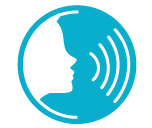What’s in your fluency tool box?
As we know, Stuttering usually manifests itself through disruptions in the flow and rhythm of speech. While there is no known cure for stuttering, these are some commonly used strategies, a.k.a “tools”which help us gain control of our speech a bit more:
- Slowing down your rate of speech just enough where you feel you can manage your fluency better. In turn, this can help reduce the frequency of the stutter.
- Breath control techniques: Proper breathing techniques can aid in reducing tension and promoting a smoother flow of speech. Taking slow, deep breaths before speaking and using gentle, controlled exhalation during speech can help manage anxiety and increase fluency.
- Pausing and phrasing: Incorporating intentional pauses and natural phrasing into speech can provide opportunities for regaining control and reducing stuttering. Breaking the speech into smaller, manageable chunks allows for more fluent transitions between words and phrases.
- Gentle onset of speech: Initiating speech gently and softly can help ease the tension associated with stuttering. Instead of forcing out words forcefully, starting with a relaxed and soft sound can promote smoother transitions into more challenging sounds or words.
- Easy onset or light contacts: Gradually increasing vocal intensity or pressure while initiating speech can minimize stuttering. By gently easing into the production of sounds, individuals can reduce the likelihood of getting stuck or experiencing blocks.
- Using rhythm and intonation: Incorporating rhythmic patterns and emphasizing natural intonation can enhance fluency. Singing, chanting, or using rhythmic patterns while speaking can engage different parts of the brain and promote a more fluid speech flow.
- Cognitive techniques: Cognitive strategies focus on changing thoughts and attitudes towards stuttering, reducing anxiety, and increasing self-acceptance. Techniques such as positive self-talk, desensitization, and reframing negative thoughts can help individuals feel more confident and reduce the impact of stuttering on their overall communication.
It’s important to note that while these “tools” can be beneficial for many individuals who stutter, their effectiveness does vary from person to person. As wonderful as these strategies may be, I always remind my clients that the psychological aspect associated with stuttering must be targeted in speech therapy. Therefore, it is a complex speech disorder, which needs to be addressed from all sides and angles when it comes to the ability to overcome it. It’s recommended to work with a speech-language pathologist who specializes in stuttering therapy to develop an individualized treatment plan and receive that ongoing support.



Leave a Comments